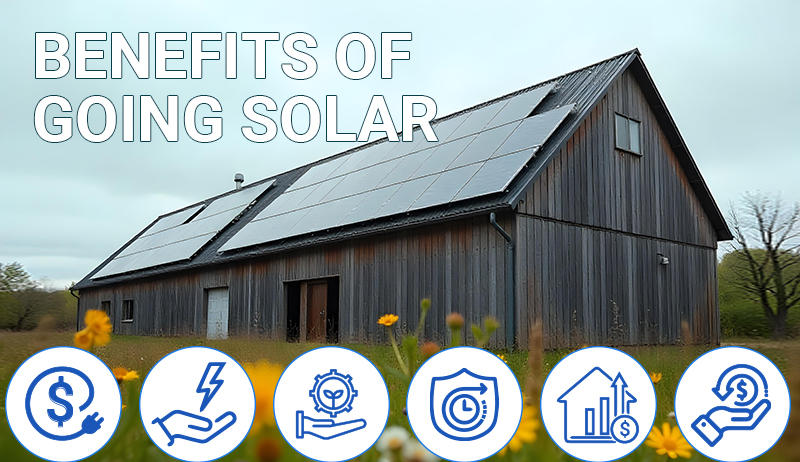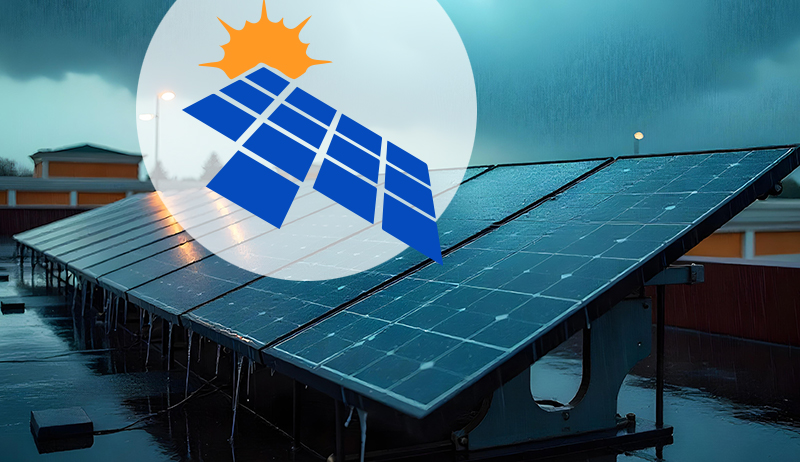North Carolina’s HB 951 (SESSION LAW 2021-165, signed into law on October 13, 2021) authorizes the North Carolina Utilities Commission (NCUC) to take all reasonable steps to achieve a seventy percent (70%) reduction in carbon dioxide emissions from electric public utilities from 2005 levels by the year 2030 and carbon neutrality by the year 2050.
So customers served by Duke Energy in North Carolina can expect their electricity to get cleaner over time, right?
Well, maybe not. Read on to see how the devil is in the details of these programs.
What Exactly Does HB 951 Require?
Part of HB 951 told the NCUC to authorize new voluntary customer programs for clean energy. The language of HB 951 provides specific direction for the NCUC on the design of such programs:
shall ensure that customers who voluntarily elect to purchase renewable energy or renewable energy credits through such programs bear the full direct and indirect cost of those purchases, and that customers that do not participate in such arrangements are held harmless, and neither advantaged nor disadvantaged, from the impacts of the renewable energy procured on behalf of the program customer, and no cross-subsidization occurs. [emphasis added]
This advantage/disadvantage language is not limited to financial cost. There are other advantages to the clean energy generation anticipated in HB 951. And all customers should be entitled to their proportional share of that clean energy and the beneficial environmental attributes embodied with it.
In response, Duke Energy’s two subsidiaries in the state (Duke Energy Carolinas and Duke Energy Progress) have proposed two such programs: Green Source Advantage Choice (GSA-Choice) and Clean Energy Impact (CEI) program. The problem is that in both of these programs, customers who enroll in voluntary programs will take more than their share of the clean energy that Duke was already required to procure to serve everyone — leaving behind a residual portfolio of dirtier energy for the non-participating customers.
In our response comments, SACE used a balloon metaphor:
“It is as though systemwide emissions were a fixed quantity of CO2 in a balloon held by participants and non-participants, and participants simply squeezed one side of the balloon; the result is the same amount of CO2 in the balloon, but the bulge is held by nonparticipating customers.” [emphasis added]

Is it Fair for Someone Else to “Volunteer” to Give You Dirtier Energy?
Unfortunately, the design of Duke’s proposed customer programs does not assure that any additional clean energy will be developed.
“Additionality” has become a guiding principle for these types of voluntary programs over the years. This implies that enrollment in a voluntary program causes the utility to procure more clean energy than it otherwise would have. A comparable way to refer to it would be clean energy that is “surplus to regulatory requirements,” or “regulatory surplus” — in other words, subscribing to these voluntary programs should result in more clean, renewable energy than the utility is required to provide.
If a customer actively chooses to sell their clean energy entitlement to another party (in exchange for money or some other form of value), that should be their right. But Duke Energy shouldn’t be able to deprive non-participating customers of those environmental attributes which HB 951 intended to afford to everyone.
The Center for Resource Solutions (CRS) offers a convenient, 2-page explanation of these Additionality and Regulatory Surplus concepts.
Duke’s Proposed Programs are Un-Certifiable & Inequitable
As designed, the proposed programs will not work for many of the large customers who might want to use them. Many large customers, including the Clean Energy Buyers’ Alliance, Google, and the U.S. Department of Defense, have raised concerns that the proposed programs will not work for large customers because they will not result in incremental new clean energy above Duke Energy’s baseline procurement.
Many large customers rely on independent third parties to certify their renewable energy purchases to make sure that they are effective.
The Center for Resource Solutions (CRS, referenced above) is the independent body that administers the prestigious “Green-e®” certification for Renewable Energy Certificates (RECs). CRS has examined the design of the proposed Duke Energy programs and has determined that they will be unable to certify them.
Comments filed by CRS include the following:
“The Green-e® Energy program currently requires that generation used for Green-e® certified sales be surplus to regulation. Under current rules, the Green-e® Energy program would not be able to certify Duke’s Customer Programs.”
CRS’s decision is a major red flag!
Furthermore, since they simply shift clean energy that it would be supplying anyway from one customer group to another, these programs proposed by Duke Energy are fundamentally inequitable and inconsistent with the statutory language of HB 951.
SACE’s mission is to promote responsible and equitable energy choices to ensure clean, safe, and healthy communities throughout the Southeast. We support well-designed, voluntary programs that provide customers with an opportunity to secure additional clean energy beyond what is on the grid as part of a utility’s default portfolio. These proposed programs do not fit the bill.
Can Duke Energy Do More?
Duke Energy has claimed that they need all the solar that it can possibly interconnect to the grid for compliance with the carbon-reduction requirements in HB 951– and they still won’t have enough for compliance. Duke Energy’s recently-filed Carbon Plan Integrated Resource Plan (CPIRP) purports that they can’t even comply with the 70% carbon reduction by 2030 as required by HB 951. So how can they possibly have any to sell in these proposed Voluntary Programs?
We proposed multiple solutions in our initial comments that could fulfill additionality or regulatory surplus criteria:
(1) proactively address interconnection challenges so that Duke Energy can interconnect more solar than the limit they forecast for future years;
(2) use of Duke Energy’s newly revised large-generator interconnection procedures (LGIP) to fast-track new zero-carbon replacement generation at the sites of fossil generators that have retired or will be retired soon, which will be leaving behind available transmission capacity;
(3) allow customers to cover incremental upgrade costs, akin to Arizona Public Service Company’s (APS) Green Power Partners Program (GPPP) “Green Commit” option;
(4) rely on storage to overcome interconnection constraints without waiting for transmission or distribution grid upgrades;
(5) avoid interconnection constraints by relying on small and rooftop facilities.
Other parties offered a few other solutions as well. It can be done, but it will take some creativity and proactivity.
What’s Next?
Stay tuned – working with our allies, we will continue to try and protect the integrity of these voluntary programs.
Digging Even Deeper: How Does This Conform to the GHG Protocol?
The Greenhouse Gas Protocol (GHG Protocol) is the de facto standard for greenhouse gas accounting and it classifies emissions associated with electricity consumption as Scope 2 emissions. The relevant Scope 2 Guidance provides instructions on both location-based emission inventories (based on the grid average emission factor) and use of a market-based method (based on contractual instruments).
“Companies who are consuming energy directly from a generation facility that has sold certificates (either owned/ operated equipment or a direct line) forfeit not only the right to claim those emissions in the market-based method (requiring the use of some other market-based data source such as other “replacement” certificates, a supplier-specific emission factor, or residual mix) but also the right to claim that emissions profile in the location-based method.”
The location-based and market-based methods can be compatible, but it’s complicated. The Scope 2 guidance describes the use of a “residual mix” calculation — i.e., the emissions factor that’s left over after contractual instruments have been claimed/ retired/canceled.
Though we don’t think disclaimer language is sufficient to resolve the deficiencies in the proposed Customer Programs, that is one option that is being considered (at least for a portion of the Customer Programs, a so-called GSAC Clean Energy and Environmental Attribute (CEEA) “Purchase Track”).
If the NCUC allows Duke to head that direction we contend that Duke Energy should be obligated to compute that residual mix and notify non-participating customers that Duke is attributing greater emissions to them as a result of those sold through the CEEA Purchase Track.
The post Problems with Duke Energy’s Proposed Customer Programs for North Carolina appeared first on SACE | Southern Alliance for Clean Energy.
Problems with Duke Energy’s Proposed Customer Programs for North Carolina
Renewable Energy
Doing What’s “Right” Is More Controversial than it Seems
 Some of us are looking for a single, simple statement to encapsulate what is going so wrong in America today, and perhaps it relates to what Aristotle says at left here.
Some of us are looking for a single, simple statement to encapsulate what is going so wrong in America today, and perhaps it relates to what Aristotle says at left here.
Even the MAGA folks think that what they’re doing is “right.” By this I mean white supremacy, mass deportation of immigrants (with or without due process), the rejection of science, and so forth.
Renewable Energy
Trump’s Agenda Is Even Far-Reaching Than People May Think
 As Trump’s former lawyer Ty Cobb says at left, in addition to turning the United Stated into an autocratic regime, at the same time, Trump needs to alter history such that future generations don’t think he did anything wrong.
As Trump’s former lawyer Ty Cobb says at left, in addition to turning the United Stated into an autocratic regime, at the same time, Trump needs to alter history such that future generations don’t think he did anything wrong.
Yes, he has his hands full, but he’s assisted by hundreds of traitors in congress, and hundreds of millions of hateful morons in the U.S. electorate.
Renewable Energy
Victoria’s VEU Scheme Introduces New Solar Incentives for C&I Properties
-
Climate Change2 years ago
Spanish-language misinformation on renewable energy spreads online, report shows
-
Climate Change Videos2 years ago
The toxic gas flares fuelling Nigeria’s climate change – BBC News
-
Climate Change2 months ago
Guest post: Why China is still building new coal – and when it might stop
-

 Greenhouse Gases1 year ago
Greenhouse Gases1 year ago嘉宾来稿:满足中国增长的用电需求 光伏加储能“比新建煤电更实惠”
-

 Climate Change1 year ago
Climate Change1 year ago嘉宾来稿:满足中国增长的用电需求 光伏加储能“比新建煤电更实惠”
-
Greenhouse Gases2 months ago
Guest post: Why China is still building new coal – and when it might stop
-

 Carbon Footprint1 year ago
Carbon Footprint1 year agoUS SEC’s Climate Disclosure Rules Spur Renewed Interest in Carbon Credits
-
Renewable Energy3 months ago
US Grid Strain, Possible Allete Sale







